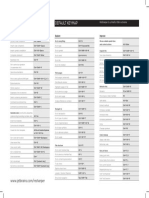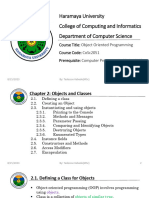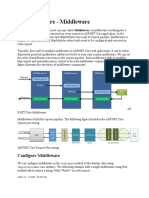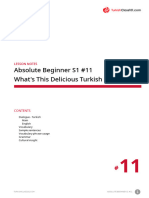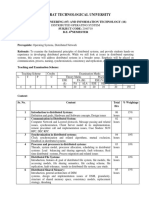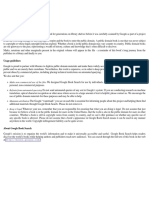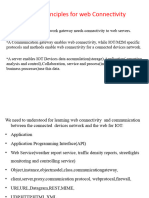C# 13 has been officially released alongside
.NET 9, introducing several new features
improvements.
and
The focus is on enhancing the developer
C# 13 introduces a range of new features experience with better tools and language
aimed at improving developer productivity Overview of the Release features.
code
and quality.
The release is part of an ongoing effort to keep
Key enhancements include better support C# modern and efficient, with a strong
params, collection expressions, partial emphasis on community feedback and open-
for source development.
properties, and a new locking mechanism. Summary of C# 13 Features
Introduction to C# 13
The introduction of the field keyword and Developers can stay informed about C#
support for ref structs marks significant updates through various resources.
advancements in the language's capabili-
ties. The official documentation on
The C# team is committed to ongoing Conclusion learn.microsoft.com provides a comprehen-
improvements and is actively seeking Staying Updated with C# overview
sive of new features.
community feedback on new features.
GitHub repositories are available for tracking
Future releases will continue to focus on language feature status and engaging with
enhancing the language while maintain- C#
thedesign team.
backward
ing compatibility and minimizing
breaking changes. Future Directions
Developers are encouraged to explore the new The params keyword has been enhanced to
features and provide feedback to help shape support IEnumerable types, allowing for
the future of C#. flexible
more method signatures.
This change enables developers to pass
collections directly without needing to
C# 13 allows ref structs to implement Introduction of Params with IEnumer… overload methods for different collection types.
interfaces, expanding their usability in gener-
programming.
ic The feature aims to simplify API design and
improve code readability.
This change enables ref structs to participate in
abstractions, which was previously limited due Collection expressions allow for concise
to their stack-only nature. Enhancements for Ref Structs initialization of collections, making it easier to
create and manipulate data structures.
The ability to implement interfaces opens up
new possibilities for performance optimiza- This feature integrates seamlessly with the
and
tion memory management. params enhancements, enabling developers
Ref Structs and Interface new
use collection expressions in method
to
Implementation Key Features of C# 13 Collection Expressions parameters.
New syntax allows developers to specify that a
type parameter can be a ref struct, enabling
more flexible generic programming.
The compiler can now generate efficient
implementations of collections based on the
This feature is particularly useful for scenarios Overview of C# 13 provided syntax.
where performance and memory efficiency
critical.
are Constraints on Ref Structs
Features and Updates C# 13 introduces the ability to define partial
properties, expanding the use of partial
methods beyond just methods.
The C# team has updated core interfaces to
support ref structs, enhancing their integra-
into
tion the language. This feature is particularly useful for source
generators, allowing for more flexible code
Partial Methods for Properties generation scenarios.
The field keyword allows access to the backing
field of auto-properties directly within Developers can now implement properties
property accessors. partial
in classes, enhancing modularity and
maintainability.
This feature simplifies property management
reducing
by the need for boilerplate code when
modifying property values. Introduction of the Field Keyword A new lightweight lock type has been
introduced to replace the traditional object-
based locking mechanism.
The field keyword is currently in preview due to
potential breaking changes in existing
codebases. This new lock type is designed to be more
Preview Features and Breaking efficient and suitable for modern multi-
Changes Introduction of a New Lock Type threaded applications.
The introduction of the field keyword may
conflict with existing identifiers named "field"
user
in code. The lock statement can now be used with this
new type, providing better performance and
The C# team is working on a strategy to reducing the overhead associated with
traditional locking.
manage these breaking changes effec- Enhancements in Locking
ensuring
tively, a smooth transition for develop- Handling Breaking… Mechanisms
ers. The new locking mechanism includes
Developers can use the "this.field" syntax to to prevent misuse, such as casting the lock
guardrails
avoid conflicts, and the team is exploring object to a generic object type.
additional solutions to mitigate issues.
This ensures that developers do not
inadvertently introduce bugs related to locking
Guardrails for Locking behavior.
The design aims to promote best practices in
concurrent programming.










